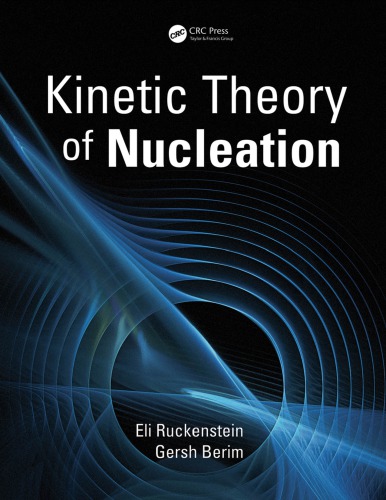Product desciption
Kinetic Theory Of Nucleation Berim Gersh Osievich Ruckenstein by Berim, Gersh Osievich; Ruckenstein, Eli 9781138032170, 9781498762847, 1138032174, 1498762840 instant download after payment.
Explore a Kinetic Approach to the Description of Nucleation - An Alternative to the Classical Nucleation TheoryKinetic Theory of Nucleationpresents an alternative to the classical theory of nucleation in gases and liquids--the kinetic nucleation theory of Ruckenstein-Narsimhan-Nowakowski (RNNT). RNNT uses the kinetic theory of fluids to calculate the rate of evaporation of molecules from clusters, and unlike the classical nucleation theory (CNT), does not require macroscopic thermodynamics or the detailed balance principle. The book compares the rates of evaporation of molecules from--and condensation on--the surface of a nucleus of a new phase, and explains how this alternate approach can provide much higher nucleation rates than the CNT. It applies RNNT to various case studies that include the liquid-to-solid and vapor-to-liquid phase transitions, binary nucleation, heterogeneous nucleation, nucleation on soluble particles and protein folding. It also describes the system, introduces the basic equations of the kinetic theory, and defines a new model for the nucleation mechanism of protein folding. Adaptable to coursework as well as self-study, this insightful book:Uses a kinetic approach to calculate the rate of growth and decay of a clusterIncludes description of vapor-to-liquid and liquid-to-solid nucleation Outlines the application of density-functional theory (DFT) methods to nucleationProposes the combination of the new kinetic theory of nucleation with the DFT methodsIllustrates the new theory with numerical calculationsDescribes the model for the nucleation mechanism of protein folding, and moreA comprehensive guide dedicated to the kinetic theory of nucleation and cluster growth, Kinetic Theory of Nucleationemphasizes the basic concepts of the kinetic nucleation theory, incorporates findings developed from years of research and experience, and is written by highly-regarded experts.
Abstract: Explore a Kinetic Approach to the Description of Nucleation - An Alternative to the Classical Nucleation TheoryKinetic Theory of Nucleationpresents an alternative to the classical theory of nucleation in gases and liquids--the kinetic nucleation theory of Ruckenstein-Narsimhan-Nowakowski (RNNT). RNNT uses the kinetic theory of fluids to calculate the rate of evaporation of molecules from clusters, and unlike the classical nucleation theory (CNT), does not require macroscopic thermodynamics or the detailed balance principle. The book compares the rates of evaporation of molecules from--and condensation on--the surface of a nucleus of a new phase, and explains how this alternate approach can provide much higher nucleation rates than the CNT. It applies RNNT to various case studies that include the liquid-to-solid and vapor-to-liquid phase transitions, binary nucleation, heterogeneous nucleation, nucleation on soluble particles and protein folding. It also describes the system, introduces the basic equations of the kinetic theory, and defines a new model for the nucleation mechanism of protein folding. Adaptable to coursework as well as self-study, this insightful book:Uses a kinetic approach to calculate the rate of growth and decay of a clusterIncludes description of vapor-to-liquid and liquid-to-solid nucleation Outlines the application of density-functional theory (DFT) methods to nucleationProposes the combination of the new kinetic theory of nucleation with the DFT methodsIllustrates the new theory with numerical calculationsDescribes the model for the nucleation mechanism of protein folding, and moreA comprehensive guide dedicated to the kinetic theory of nucleation and cluster growth, Kinetic Theory of Nucleationemphasizes the basic concepts of the kinetic nucleation theory, incorporates findings developed from years of research and experience, and is written by highly-regarded experts


